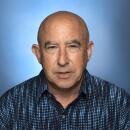Loyola’s biggest rebound isn’t on the court
- Share via
Less than six months after his 17th birthday, Warren Williamson of Los Angeles Loyola earned a spot in the starting lineup for the Cubs’ basketball team, completing a comeback that’s nothing short of remarkable.
For almost two years, the 6-foot-4 Williamson suffered episodes of dizziness and vomiting. He sought a diagnosis from more than a dozen doctors. He endured countless blood tests, CT scans and X-rays. Doctors checked his heart, his brain, his ears.
Since birth, he has had minimal hearing in his right ear, but he had never encountered bouts of vertigo until his freshman year at Loyola. That’s when “two miserable years” worth of dizzy spells began.
“I couldn’t walk for four hours,” he said. “The first reaction was, ‘You have a bad flu.’ ”
At home late at night, trying to write a paper for school, Williamson would collapse and feel as if he were the wheel on “Wheel of Fortune” -- spinning constantly.
“You’re walking like a zombie,” he said.
At a game last summer, he had to leave the court during a dizzy spell and lie down in the bleachers.
Finally, last year, Dr. Robert Baloh, a professor of neurology at UCLA, determined that Williamson was suffering from Delayed Endolymphatic Hydrops, an ear disease that usually affects people between 30 and 50 years old.
To rectify the spinning, he decided to undergo surgery last July to remove a part of the inner ear that deals with balance, even though doing so would leave him completely deaf in his right ear.
Before a pre-operation exam, he sat next to UCLA Coach Ben Howland, who happened to be in the same waiting-room area at UCLA. He saw that as “a good sign” that the “basketball gods” would be watching over him.
He woke up after the four-hour surgery suffering from a strong spinning sensation because his brain was still compensating and adapting to the loss of the balance mechanism on his right side.
Doing the simplest task -- sitting up -- seemed impossible. He spent five days in the hospital and had to show he could stand and eat on his own before being released.
“You stand straight up and fall down,” he said. “It’s a feeling not only of going to the floor but continuing to spin.”
He was determined to get out of the hospital and begin therapy, during which he would learn to walk again. When he returned to his home in South Pasadena, he forced himself to get up and dribble a basketball outside because he was sick of being stuck in his bed.
By the end of August, when he showed up for his checkup, he surprised his doctor by how quickly he had been able to walk without any help.
By September, he was back at Loyola, ready to maintain his 4.0 grade-point average and start his junior season of basketball. But Coach Jamal Adams was apprehensive about using Williamson.
“He’s the ultimate team guy, takes charges, blocks out people,” Adams said. “He’s a coach’s dream, but I was scared to death to put him out there.”
After a meeting with Adams, during which Williamson told his coach, “I’m healthy, I can do it,” Adams turned him loose.
There’s no more nausea or spinning episodes, though when Williamson turns his head quickly, especially to the right, things can get blurry.
Of course, his hearing loss gives him an excuse to ignore his coach’s complaints and forget about his mother’s requests to do chores at home.
“That’s the best part,” he said. “You’re on the couch at home and your mom tells you to do something, ‘I didn’t hear you the first time.’ ”
Adding to his renewed vigor -- “I can’t remember the last time I’ve been this healthy” -- is the chance to head to the race track and watch the horses owned by his grandfather, Warren B. Williamson, a successful thoroughbred owner and breeder in Southern California.
“I love the horses,” Williamson said. “It’s a little stressful, but it’s always fun.”
He has been to every race except one for his grandfather’s standout 5-year-old mare, Nashoba’s Key, who won seven of her eight races last year and was expected to make her 2008 debut in a $500,000 race on Saturday at Santa Anita.
“She’s not the prettiest thing, but she can run,” he said.
Williamson could end up following his grandfather in the racing business. He loves the roar of the crowd as the horses come down the stretch -- plenty loud enough for him to enjoy the excitement, even if he can hear it through only one ear.
But these days, he’s just grateful that the only spinning he does is when he wheels around an opponent for a layup.
“To know I can walk and play and have fun and be outside doing things without having to worry when is the next time I’m going to vomit . . . the pressure is off,” he said.
A couple of weeks ago, his father, Henry, asked him if he thought a sprained knee injury he had was serious.
Williamson smiled and said, “I can walk.”
So there he was last week, being introduced as part of Loyola’s starting lineup before a noisy crowd at North Hollywood Harvard-Westlake in a game for first place in the Mission League.
Once the ball was tipped, Williamson did what he has become known for -- diving for loose balls, setting sturdy screens, tipping balls to teammates and just going all out each time down the court.
What a comeback indeed.
--



